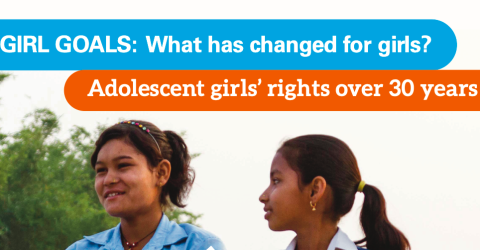
On the occasion of International Women's Day, Unicef, in collaboration with Plan International and UN Women, published “Girl Goals: What Has Changed for Girls? Adolescent girls’ rights over 30 years”, a report that analyses the progress made from 1995, the year of the adoption of the Beijing Platform for Action, to the present day.
Despite significant progress in areas such as education, millions of adolescent girls around the world continue to be excluded from the education system, are inadequately prepared for the future and do not have access to essential health services. Moreover, they are still exposed to harmful practices such as early marriage, female genital mutilation, violence and abuse.
Highlights of the report:
- Education, training and digital skills: Over the past 20 years, the number of out-of-school girls has decreased by 39%.
- Early marriages and female genital mutilation: Although the prevalence of child marriages has gone down from 25% to 20% in the last ten years, an estimated 10 million girls will still be at risk by 2030.
- Sexual and reproductive health: Complications related to pregnancy and childbirth are the leading cause of death among girls between the ages of 15 and 19. In sub-Saharan Africa, only 56% of sexually active adolescent girls have access to modern contraceptive methods.
- Gender-based violence: Approximately 1 in 4 adolescent girls between 15 and 19 has experienced physical violence from their partner at least once in their life.
Information on “Girl Goals: What Has Changed for Girls? Adolescent girls’ rights over 30 years” can be found on the Unicef website.
Further materials and news can be found on this site under Gender discrimination and Education, accessible from the “Topics” navigation menu.

